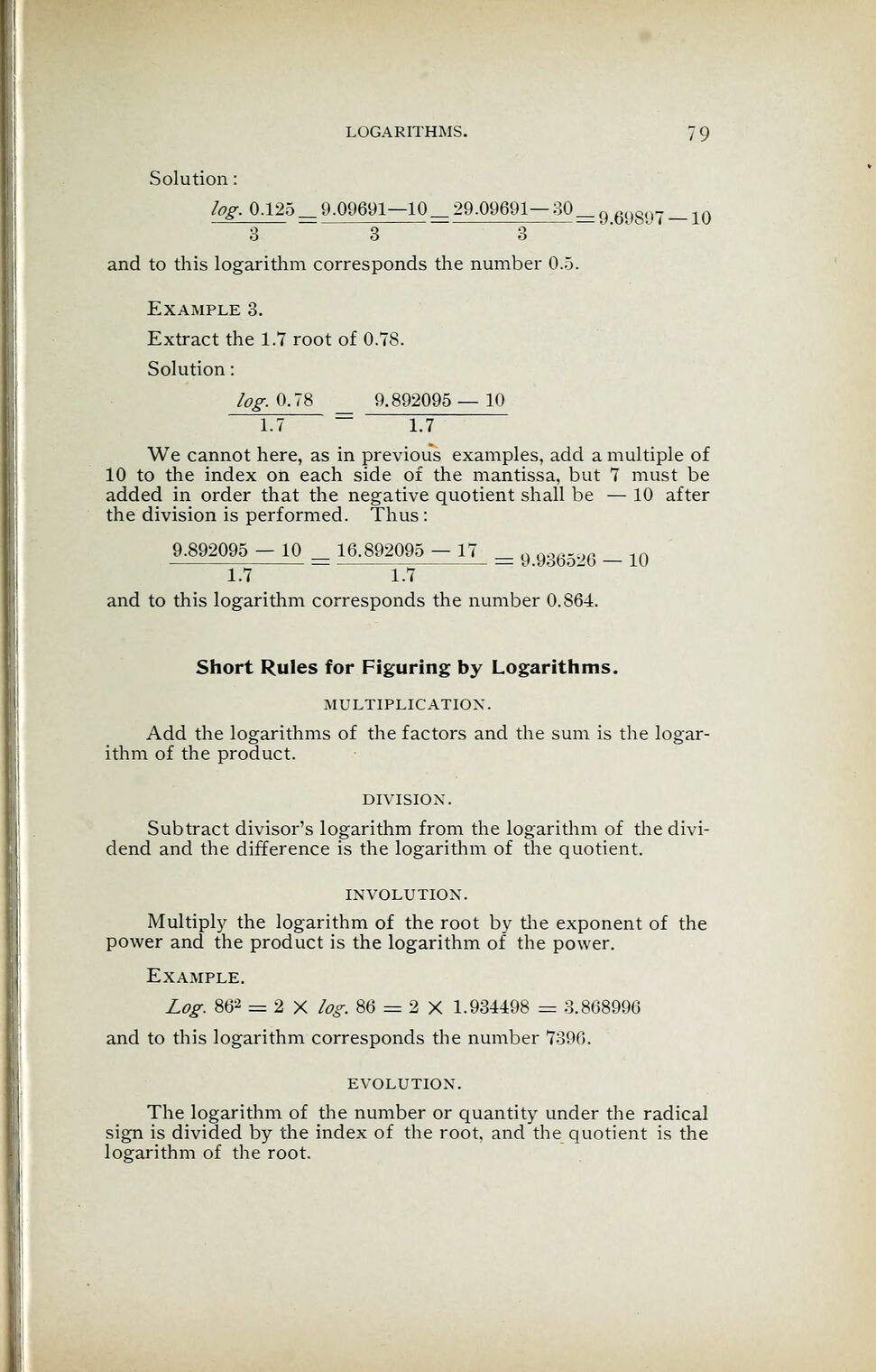
Full resolution (JPEG) - On this page / på denna sida - Logarithms - Division of logarithms - Short rules for figuring by logarithms

<< prev. page << föreg. sida << >> nästa sida >> next page >>
Below is the raw OCR text
from the above scanned image.
Do you see an error? Proofread the page now!
Här nedan syns maskintolkade texten från faksimilbilden ovan.
Ser du något fel? Korrekturläs sidan nu!
This page has never been proofread. / Denna sida har aldrig korrekturlästs.
LOGARITHMS.
Solution
log. 0.125 _ 9.09691—10 _ 29.09691—80 _ Q
QQ8Qrj _ 1Q
3 3 3
and to this logarithm corresponds the number 0.5.
Example 3.
Extract the 1.7 root of 0.78.
Solution
:
log. 0.78 9.892095 — 10
L7
~"
L7
We cannot here, as in previous examples, add a multiple of
10 to the index on each side of the mantissa, but 7 must be
added in order that the negative quotient shall be — 10 after
the division is performed. Thus
:
9.892095 — 10 16.892095 — 17 n IW.,,, -m
— = 9.9obo2b — 10
1.7 1.7
and to this logarithm corresponds the number 0.864.
Short Rules for Figuring by Logarithms.
MULTIPLICATION.
Add the logarithms of the factors and the sum is the logar-
ithm of the product.
DIVISION.
Subtract divisor’s logarithm from the logarithm of the divi-
dend and the difference is the logarithm of the quotient.
INVOLUTION.
Multiply the logarithm of the root by the exponent of the
power and the product is the logarithm of the power.
Example.
Log. 862 = 2 X log. 86 = 2 X 1.934498 = 3.868996
and to this logarithm corresponds the number 7396.
EVOLUTION.
The logarithm of the number or quantity under the radical
sign is divided by the index of the root and the quotient is the
logarithm of the root.
<< prev. page << föreg. sida << >> nästa sida >> next page >>